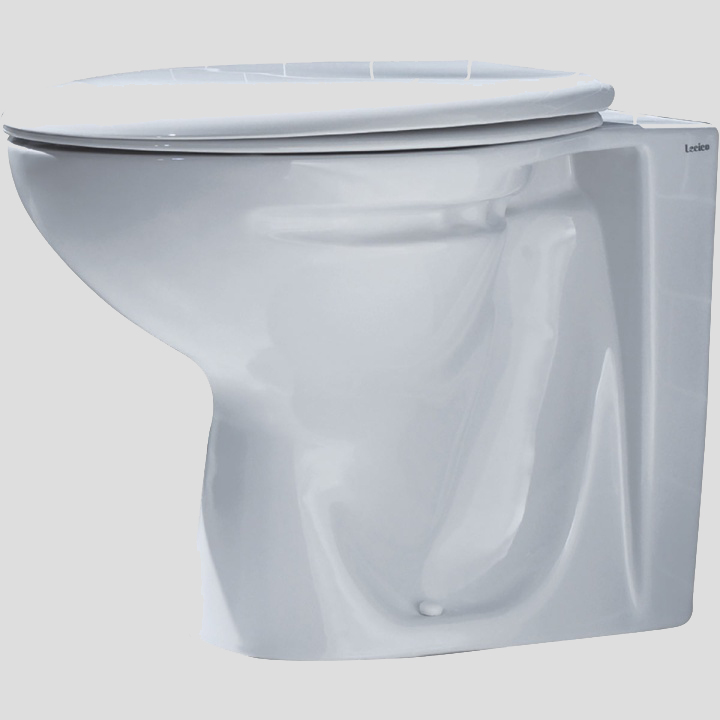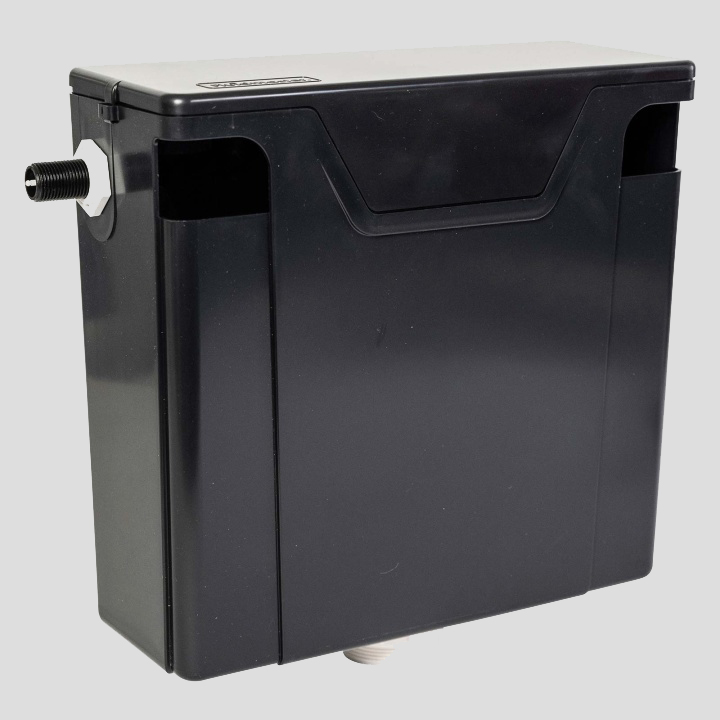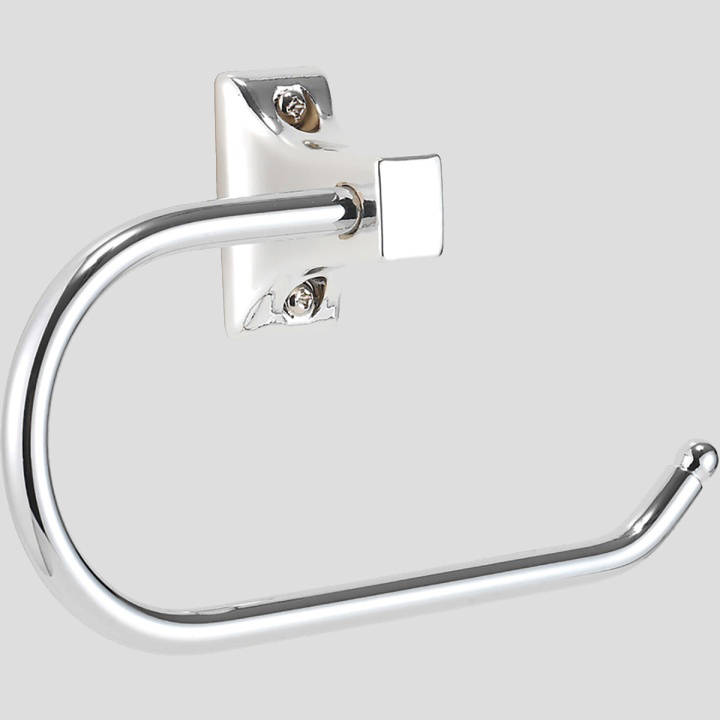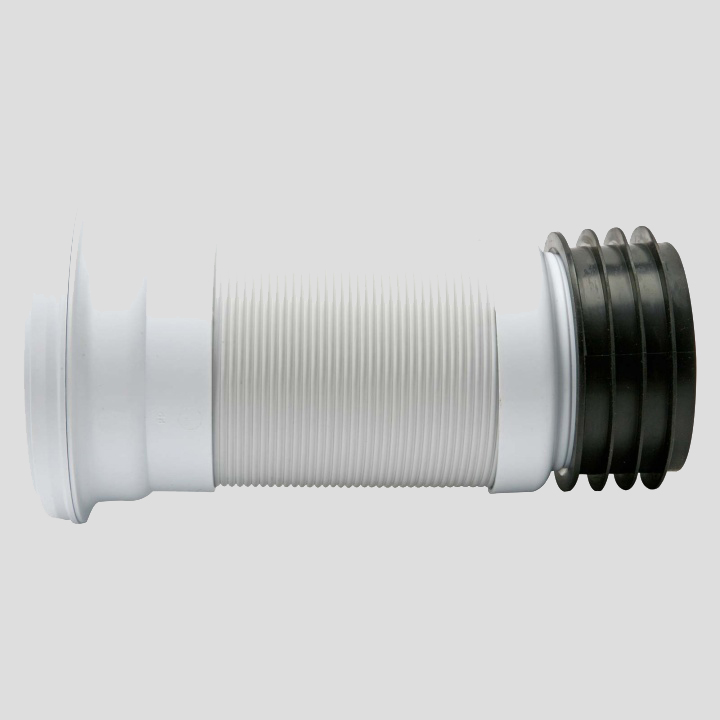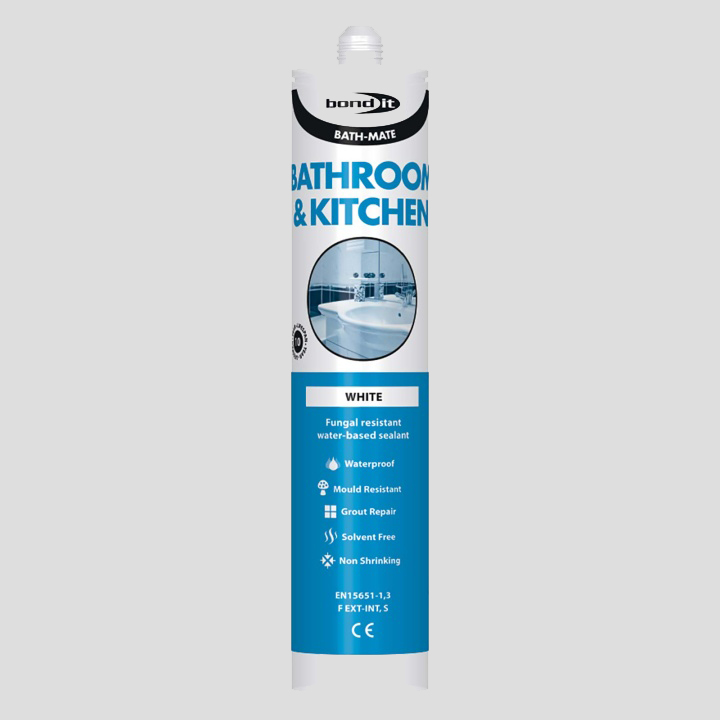How to Install a Toilet: Close-Coupled, Wall-Hung & Back-to-Wall
Installing a toilet might not be the most glamorous part of the bathroom installation process, but it’s a crucial one. Out of all the bathroom fixtures and fittings you might find yourself working on, the toilet could be the one to make life the most unpleasant for your customers if there are any problems later down the line. A good toilet fitting, free of any leaks or issues, will contribute to a high-quality bathroom renovation and ensure your customer’s satisfaction.
Whether you’re installing a brand-new bathroom and need to know how to plumb and install a toilet from scratch, or if you’re replacing an older toilet that’s faulty or outdated, we’ve put together a handy step-by-step guide to help you with the process. We’ll talk about how to install different types of toilets, how to connect a toilet to a waste pipe, how to fit a toilet pan to the floor and much more.
Remember to check out our other bathroom blogs for advice, inspiration and step-by-step guides, such as our handy blogs on how to plumb a bathroom and how to seal a bath or shower.
Most types of toilet installation have a similar process, but there will be some key differences depending on the type of toilet you’re fitting.
What are the Different Types of Toilets?
Close-Coupled Toilets
A close-coupled toilet fitting is the simplest and most popular type of toilet installation in the UK, where the cistern is visible and directly attached above the toilet pan in one single unit, in a traditional “L” shape. Most bathrooms will feature this type of toilet.
Wall-Hung Toilets
A wall-hung toilet installation features a toilet that hangs from the wall and is supported by a sturdy frame, whilst the toilet cistern and pipes are concealed behind the wall. Wall-hung toilets are often found in newer, more contemporary bathrooms.
Back-to-Wall Toilets
A back-to-wall toilet installation is like a wall-hung toilet, except the toilet is fixed to the floor instead of being suspended from the wall to look as though it’s ‘floating.’ The toilet pan is installed flush against the wall and the cistern and pipes are concealed behind the wall – this type of toilet fitting is ideal for smaller bathrooms where saving space is a concern.
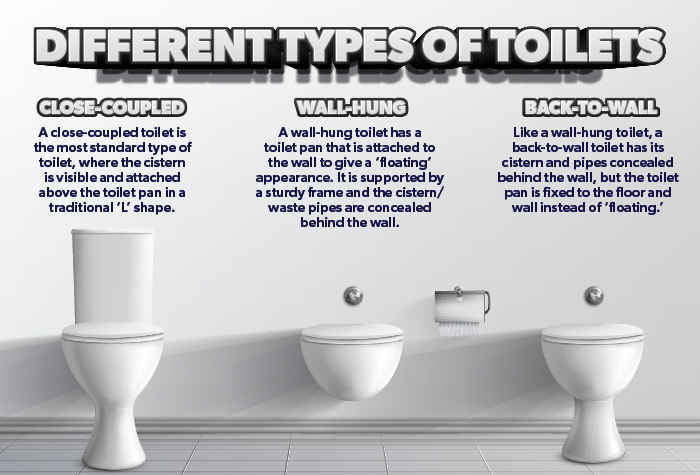
Everything you need to get started
Before you get started on the actual job of fitting a toilet, it’s a good idea to remind yourself of the following steps:
1. Check your Tools and Components
The toilet your customer has picked out will come with most of its parts included, along with the manufacturer’s instructions. Items such as rubber sealing rings and nuts and bolts are likely to be provided for you – make sure you go through the contents of the package and ensure you have everything you need.
You’ll also want the best tools for the job, including basics like a drill and cable detector, as well as any specialist tools you might need to work with certain types of walls.
2. Familiarise Yourself with the Instructions
It goes without saying, but you should always read the instructions that come with your toilet package before beginning the installation. Different bathroom and toilet designs may come with different requirements. Even if you’ve done this job countless times before, it’s still worth checking that the particular toilet model you’re working with has no special features that are new to you and might catch you out down the line.
3. Finish your First and Second Fix To-Do Lists
Check off every item on your to-do lists for the first and second fix stages of your bathroom renovation before beginning the toilet installation. Just make sure the floors and walls are still accessible, and no bathroom tiles have been laid down yet.
How to Fit a Close-Coupled Toilet
Step 1: Gather your equipment. The first step to a close-coupled toilet fitting is to unpack your toilet kit fully and make sure it comes with everything you need. It’s better to notice any faults, damage or missing pieces with the new toilet now rather than halfway through the installation. The basic tools and equipment you might need to fit a close-coupled toilet include:
- Close-coupled toilet, seat and flush plate
- Drill
- Spirit Level
- Measuring tape
- Adjustable wrench / spanner
- Screwdriver
- Silicone gun & sealant
- Utility knife
- Marker pen/pencil
- Safety wear i.e. gloves & eye protection
Step 2: Turn the water off. Whether you’re installing a brand-new close-coupled toilet or replacing an existing cistern, the first step should always be turning the water off at the stopcock just in case.
Step 3: Fitting a toilet cistern. Insert two long fixing bolts into the holes at the bottom of the cistern, leaving them unattached for now. Take the bottom fixing nut and two washers from the bottom of the flush valve and slide into the cistern, replacing the nut and washers on the other side and tightening them up with an adjustable wrench. Insert the inlet valve into the cistern base (again making sure the nuts and washers are off beforehand, then replacing and tightening them afterwards). Place the large washer over the flush valve.
Step 4: Fitting the toilet cistern to the pan. Connecting the close-coupled cistern to the toilet pan should be straightforward here – pick up the cistern and carefully insert the fixing bolts that are sticking out into the holes in the pan, then rest it on top in place. Add washers and nuts onto the fixing bolts on each side and tighten them with a wrench. Reach into the cistern and tighten those bolts from the other side with a screwdriver.
Step 5: Fix the toilet to the floor and wall. When fitting a toilet to waste pipes, push the toilet into place so it sits flush against the wall then join the flexi pan connector with the soil pipe and the pan outlet. Use a pipe and cable detector to check the floor for any obstructions in the wall and floor. Mark the wall and floor with a pencil for the toilet’s fixing points. Disconnect the toilet and move it out of the way before positioning fixing brackets on the floor, drilling holes and screwing them into place. Then you can drill your wall holes, add wall plugs and move the toilet back before fixing the toilet to the floor and wall.
Step 6: Activate the water. Screw your flexi hose to the base for the cold-water supply, ensuring the cable has no kinks, then turn the stopcock back on. Check for any leaks.
Step 7: Attach the toilet seat. Fit the toilet seat to the pan and screw it into place. Before you fully tighten the screws, check the seat stays up when it needs to.
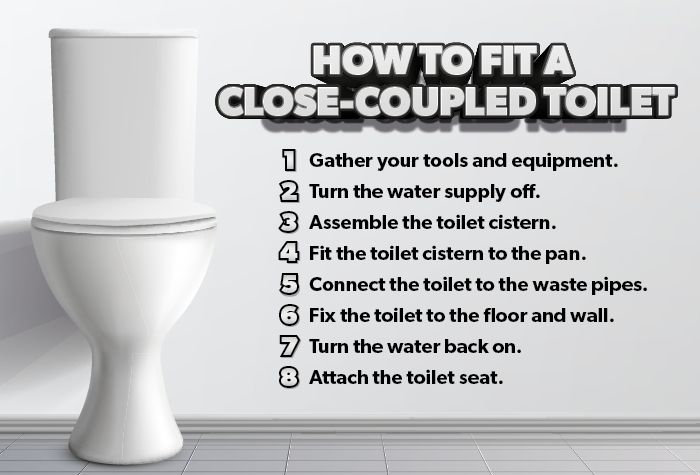
How to Fit a Wall-Hung Toilet
Step 1: Gather your equipment. As with any toilet installation, first unpack your toilet kit fully and make sure it comes with everything you’ll need. Check that nothing is faulty, damaged or missing. The basic tools and equipment you might need to fit a wall-hung toilet include:
- Wall-hung toilet, seat, fixing frame and flush plate
- Drill
- Spirit level
- Measuring tape
- Adjustable wrench / spanner
- Hole saw
- Silicone gun & sealant
- Utility knife
- Marker pen/pencil
- Safety gear i.e. gloves & eye protection
Step 2: Check, measure and mark the wall. Make sure the wall is strong enough to support the wall-hung toilet (you might need to reinforce it if necessary or buy a freestanding wall-hung frame). Measure the positions of the frame and cistern against the wall and mark with your pen. Use your hole saw to cut any holes in the wall for the waste pipe if needed.
Step 3: Install the fixing frame. Assemble your wall-hung toilet fixing frame according to the manufacturer’s instructions, securing the frame to the floor and the wall using the appropriate fixings depending on the surfaces you’re working with. Check the frame is straight using your spirit level. Connect the water supply to the cistern. Install the wall bracket for the toilet bowl as per its instructions too, then test everything for leaks.
Step 4: Install the wall-hung toilet pan. Now the fixing frame is installed, you can install the toilet itself. Attach the rubber flush gasket into the toilet bowl, then insert the fixing bolts into the wall bracket and attach them to the rubber gasket. Check the position of the toilet bowl, ensuring that it’s level and secure before adjusting the fixing bolts with your adjustable wrench/spanner. Connect the toilet bowl to the waste pipe with the suitable connector.
Step 5: Attach the toilet seat. Fit the toilet seat to the pan and screw it into place. Before you fully tighten the screws, check the seat stays up when it needs to.
Step 6: Finishing touches. Connect the flush plate according to its instructions, then turn on the water supply to the cistern, check for leaks and test the flush a few times to make sure it’s working properly.
Step 7: Install finishing wall panels or tiles. Here you can install your wall panels, tile backer board or tiles around the toilet area to conceal the cistern behind the wall. Ensure the flush plate and access hatch are still accessible. After everything’s installed you can clean up any debris or waste around the area.
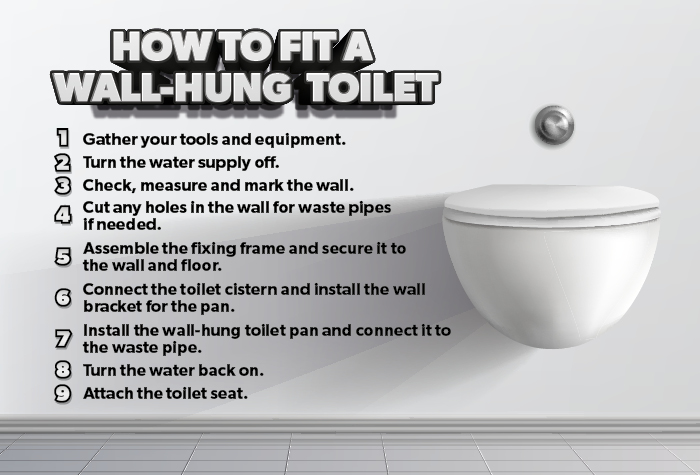
Get the Supplies you Need to Complete your Toilet Installation
FAQs
-
How do I plumb a toilet waste pipe?
Insert the pan connector into the soil pipe, making sure it’s a secure, snug fit with no leaks. Align the pan with the connector so it sits flush next to the waste pipe. Use a flexible pan connector if you’re tight on space.
-
How do I cut tiles around a toilet?
Trace the dimensions of the toilet base and use a tile scribe to mark it out on the tile. You can then use a tile nipper to cut the tile to size, or an angle grinder with a diamond blade for more complicated cuts. Don’t forget to leave enough room for grout in between the tile and the base of the toilet.
-
What’s the best sealant for a toilet base?
When sealing a toilet, it’s best to use a bathroom silicone sealant as it’s flexible, waterproof, durable and very easy to apply with a gun and wipe clean.
-
What are some back-to-wall toilet fitting problems?
Back-to-wall and wall-hung toilets can be more difficult to install than standard toilets as the cistern and waste etc. is placed behind the wall. This can also make it more difficult to repair or maintain over time.

By Rae Davis
Rae is a Digital Copywriter within the Selco Team with 10 years' experience in the construction industry and specialises in long-form content writing. With a love for research and simplifying complicated information into easy-to-follow content, she is known for her handy how-to blogs. When she’s not at her desk, she’s got her head either in a book or up in the clouds.
